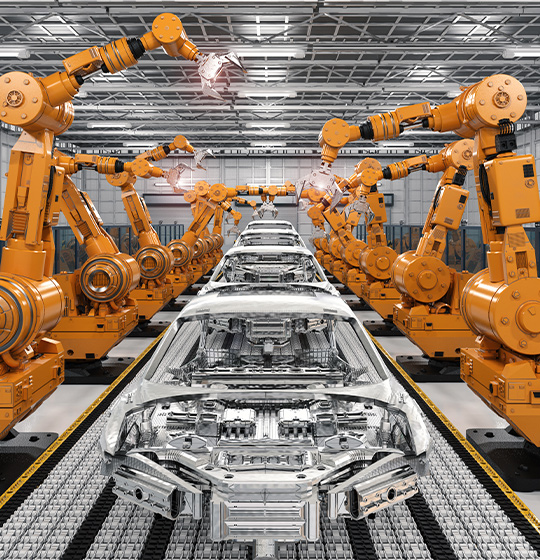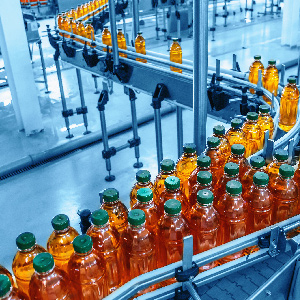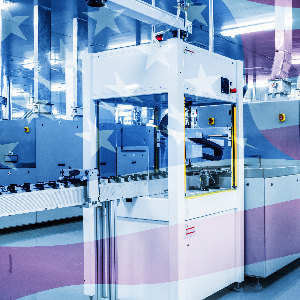Lubrication Mistakes That Cause Machine Downtime
Post By: Luke West On: 19-06-2023 - Manufacturing - Safety
For most manufacturing facilities, machine downtime means thousands or even millions of pounds lost in production. The key to solving this is preventive – or predictive – maintenance. A relatively small investment can help avoid costly downtime. Money spent wisely will return your investment many times over.
In any type of machinery, moving parts require proper lubrication to work efficiently. Bearings and guides are likely to suffer the hardest wear, so a lubrication management programme can help you prolong their life. Establishing a programme of this type will help you avoid premature machine failure and reduce maintenance costs. There are several common lubrication mistakes that cause downtime, so we’ve compiled some suggestions for avoiding them.

Neglecting Maintenance
It’s increasingly obvious that predictive maintenance is a cost and energy-efficient strategy. Sitting back and waiting for your machine components to fail is an old-fashioned approach. It leads to unscheduled downtime and lost productivity, which ultimately means more expense for you. You can prevent this by implementing a structured lubrication schedule that includes both visual and manual inspection, self-lubricating bearings and condition monitoring.
Your first line of defence against downtime is regular inspection of the lubrication system. Start with the raceway and shafts, inspecting them visually to make sure that there’s a consistent, thin film of lubrication spread evenly throughout. You can also check whether more lubrication is evident than is necessary.
You can perform a quick manual check to gauge if there’s enough lubrication. Glide one finger across the bearing shaft, which ought to feel slick but not dripping. You may also detect the roughness of metal particles, indicating excessive wear. Factors that may affect bearing life include contamination by foreign materials like dust, dirt and particulates. Other signs of wear may be evident, including increased vibration or excessive noise.
How effective such an inspection is depends on your training, experience and judgment. You should know the correct levels of lubrication required for different loads, travel demands and environmental conditions. Most importantly, you should be conducting these inspections at regular intervals.
Technological Advances
Another trend that comes along with Industry 4.0 is automated monitoring. You can install optical sensors to monitor lubrication levels, and to trigger alarms when these get too low for the load and travel distance. Other sensors can detect the slightest alterations in performance due to wear or low lubricant levels, such as increased friction or vibration.
Self-lubricating bearings are also more frequently installed in many applications. These have internal reservoirs to store lubricant, which can be supplied or removed as required. They’re very useful for awkward installations, where access for routine maintenance might be difficult or unsafe. Even if you use self-lubricating bearings, you shouldn’t neglect your regular maintenance schedules.
Using The Wrong Lubricants
It may seem obvious, but you do need to use the correct lubricant for any given application – and identifying the right type can be difficult. As well as mechanical and application considerations, you’ll also have to wade through a great range of available lubricant options. This is a critical choice for linear bearings and guides. Using the wrong lubricant will at best reduce their operating life, and at worst cause catastrophic failures.
These general guidelines will help you choose the right option:
- Light loads at high speeds run best using low-viscosity grease or machine oil
- Medium loads at medium speeds run best using the American standard NLGI 1 or 2 grease.
- Heavy loads may demand a grease with an extreme pressure additive, to help the grease withstand high pressures.
Lubricants may contain other types of additive, such as:
- Antioxidants, which protect the grease while it’s in storage and prolong its life at increased temperatures
- Rust and corrosion inhibitors to prevent the grease attacking metals and causing oxidisation
- Polymers or tackifiers to provide water resistance and better adhesion to metal surfaces
- Solid lubricants to protect against friction and wear, including moly (from the mineral molybdenite), graphite powder and PTFE (polytetrafluoroethylene)
You should always follow manufacturers’ guidelines when lubricating linear slide tables and use only the grease supplied by them. Some other greases may degrade, and reducing their efficacy. Don’t use any solid lubricant like graphite powder or PTFE with roller-type or recirculating ball bearings. While solid lubricants work well for sliding motion, they have little effect on rolling friction.
Grease or Oil?
As a general rule, heavier lubricants provide greater protection from contamination. Grease therefore tends to top oil in providing protection, but this isn’t the only selection criterion. If your application is exposed to fumes, dirt, dust and other contaminants, you’ll probably choose grease. It maintains its consistency longer than oil, making it better for extended operations that require minimal maintenance.
However, oil performs better at high speeds and temperatures. It quickly becomes much less viscous as operating temperatures increase. Oil is usually supplied in several viscosity values, which in the UK are called the ISO VG (International Standards Organisation Viscosity Grade). The ISO grades go from 2 to 1500, measuring the oil viscosity at an operating temperature of 40°C (104°F).
Each application may have a different operating temperature for its bearings, however, and the trick is to find the oil that has the minimum acceptable viscosity at this temperature. You need oil that’s viscous enough to create a fluid film at the customary shear rates, but not so viscous as to cause excessive friction.
It’s usually simplest to follow the manufacturers’ recommendations, and/or consult with a specialist lubrication supplier to get the right oil or grease for your equipment. If you mix incompatible oils and greases you can run into serious problems. Your equipment will have a longer working life if you research this subject carefully before you buy.
The Importance of Lubrication Protocols
For ideal equipment operation, it’s vital that lubricants are properly transported and stored. Setting up protocols for this is worth investing your time, effort and money. The ideal system for keeping things clean and in good order is to tag containment and transfer equipment with colour codes. This encourages best maintenance practices and allows you to see at a glance where and what things are.
It’s also good practice always to filter lubricants during any transfer – from barrels or tanker to bulk storage, from there to temporary containers, and from there to the equipment being serviced. This is because new oil is rarely as clean as it needs to be. Compare the ISO VG to the specifications for lubricating your linear bearings and guides and you’ll see that the new oil isn’t clean enough.
Lubricant Best Practice
Always install and store lubricants in one clean area, together with any tanks and transfer equipment. Ideally this should be somewhere with environmental controls to stabilise humidity and temperature and minimise airborne contaminants. You can create the most efficient workflow by locating this area centrally, ideally near a maintenance area or storeroom.
Colour code everything, making all associated items the same colour. This makes lubricant distribution an intuitive and easy-to-use system and is easily accomplished with ready-made tags and labels. Include transfer equipment, storage tanks and equipment for servicing. For example, if your grease gun is green, make a green outline for it on a pegboard in your lubricant storage area. Then put a green tag on all the equipment where you use this grease, stating its name and type.
Don’t skimp on equipment. Investing in premium components demonstrates your commitment to the programme and will save you money in the long term. It will also encourage staff to follow the protocols.
Protect oil from airborne contaminants by using closed transfer points with fluid quick couplers, to minimise the potential for human error and ensure clean transfers. Use only quality filtration, preferably with desiccant breathers, to keep fluids clean when they’re most vulnerable.
Inadequate Training
Lack of training often leads to lubricant issues during start-up, which might well persist throughout the equipment’s life. This particularly applies to equipment that relies on linear guides and bearings, which may be unknown territory for maintenance staff. Unless you invest in appropriate staff training, your equipment may be improperly maintained, and ultimately have a much reduced operating life.
Your maintenance programme should be centred around a well-planned lubrication management system, in which education and continuous improvement play a major role. Investing in training and accreditation will save you time and money. Your maintenance staff will be properly educated and able to maintain your equipment at optimal performance levels.
Extended Lifecycle
Understanding the role of lubrication in preventing machine failure is crucial, both for machine designers and those involved in equipment maintenance. Investing in training and usage protocols also benefits maintenance staff. It ensures smoother running of maintenance programmes and faster delivery of the correct lubricants.
Moving to predictive maintenance and automated monitoring greatly benefits end-users. Your gain is an extended lifecycle for precision linear motion components and lower lifecycle costs.
Get More From Rowse Straight To Your Inbox




